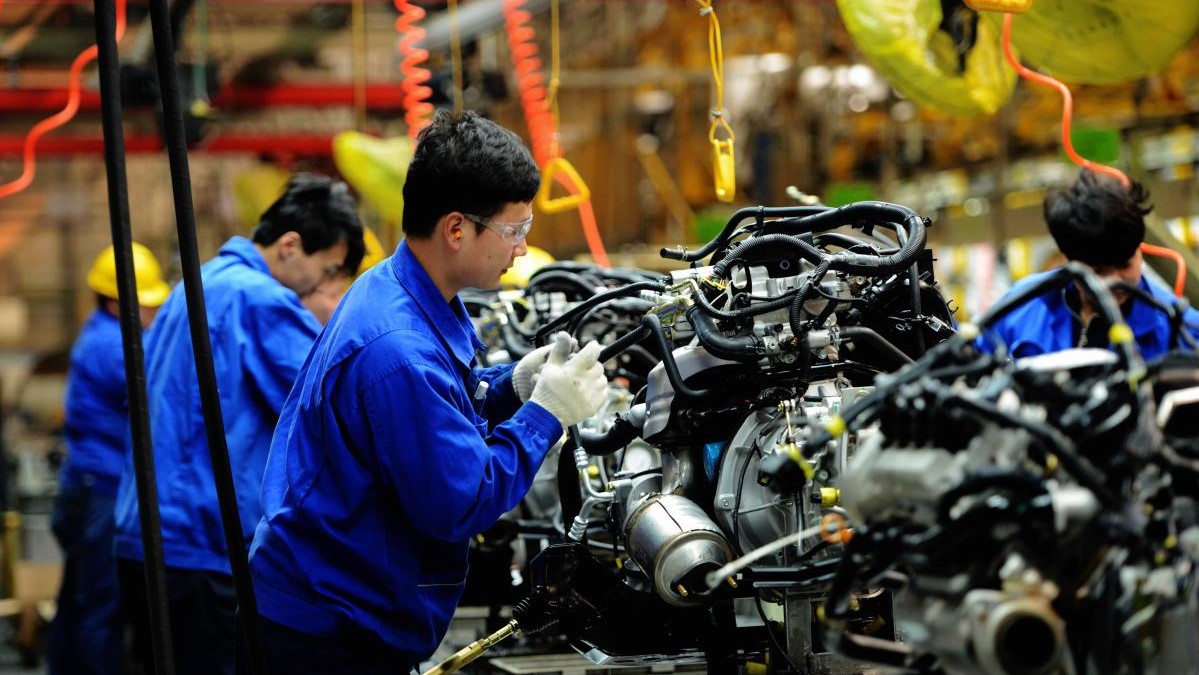This essay is an updated and abridged version of a commentary published by the East Asian Institute.
China’s 14th Five-Year Plan, approved last March, proposes “Dual Circulation” as a solution for lacklustre external demand and geopolitical tensions.
The concept of Dual Circulation, first proposed by Xi Jinping in May 2020, remains somewhat vague, which is not unusual for new Chinese policy concepts. It implies greater reliance on domestic supply chains, domestic demand, and “indigenous innovation” as a means to create growth and employment, in contrast to the “international circulation” of overseas demand which has been a focus since the mid-1980s.
In China’s view, the trade and technology measures that the US has imposed on China and the expectation that growth in the world economy will remain lacklustre, necessitates more reliance on domestic drivers of growth. In some sense, it is also a risk management strategy to avoid reliance on other countries for critical technology and supplies.
Dual Circulation does not imply that China will become a closed economy again. In fact, in President Xi’s speech during his third “Tour to the South” to celebrate 40 years of Shenzhen as a special economic zone he reiterated that, “Engaging with the external economy will also be the key to future development.” This implies that “Reform and Opening Up” [China’s shorthand for the reforms since Deng Xiaoping] remains important. Nevertheless, it will undoubtedly be less important than in the past.
Foreign trade and investment are becoming less important for China. China’s share of trade in goods to GDP has come down from almost 50% in 2008 to a little over 30% now. This is not much different from that of the EU-27 and Japan (Figure 1), but still about 10 percentage points higher than the United States.

China’s current account surplus has also come down sharply, from 9% of GDP in 2007 to less than 1% in 2019—though it bounced back in 2020, as China was quick to resume production and exports after getting COVID-19 under control. In the past decade, China has also expanded its domestic supply chains, while divesting from the more labour-intensive production it specialised in before. Both led to less reliance on trade.
Finally, China’s economy is increasingly dependent on services and less on manufacturing, which tends to lower the share of trade to GDP; the relative price of services also tends to increase as countries become richer. On the demand side, China has been trying for more than a decade to rebalance demand, external versus internal and investment versus consumption.
Externally, this goal has been more or less achieved. However, internally, consumption demand continues to lag. Although consumption as a share of GDP increased from 34% of GDP in 2010 to 39% last year, it is far below that of more advanced countries such as the United States (68%), the Eurozone (54%) and Japan (56%). As a result, investments remain uncomfortably high in China at 43% of GDP, and it is hard for any country to invest such amounts without waste.
Rebalancing demand towards consumption requires major policy changes. Expansion of social safety in China could help reduce household savings, but both the functional and interpersonal income distribution need to change. China’s households still receive less than half of what is being produced, so even if the household savings rate comes down, consumption would not rise to the level of OECD countries.
Moreover, richer households tend to save more. While income inequality in China has stopped rising, it remains as high as in the United States. On the other hand, wealth inequality, driven largely by housing ownership and housing prices, has been rising since the late 1990s.
Unlike more advanced countries, the government redistributes little because social welfare spending is still low as a share of GDP and the tax system relies predominantly on indirect taxes, in particular VAT. While the latter is efficient in raising revenues, it is not an equalising tax.
Finally, urbanisation—a key driver of domestic demand—has continued apace. Currently, 64% of the population live in urban areas.
However, only 45% of the population has urban hukou, or household registration. Those without it have fewer opportunities in the labour and housing markets. Their families have less access to social services and social security.
This once again became clear during COVID-19. Some 50-100 million migrants lost their jobs and many of them fell through the cracks of the social safety net. Abolishing the hukou system in the coming 14th FYP period would be a bold move. However, according to a report of the World Bank and the Development Research Centre of the State Council, the move is entirely affordable and will boost domestic consumption.
A second plank of the Dual Circulation, and of the 14th FYP, is innovation. Though nothing new, innovation has taken on further importance and urgency considering US moves against China in the area of technology.
The US is now discouraging research & development cooperation between Chinese universities and companies with US universities. The United States is making it harder for Chinese researchers and Chinese students to work and study in the United States.
In response, China is doubling down on its efforts to promote “indigenous innovation.” Moreover, the emphasis seems to have shifted from more applied innovation to fundamental research, so as to become less dependent on foundational technologies from abroad.
China is well under way to becoming a technological powerhouse. The country now spends some 2.3% of GDP on R&D, and although it just missed the 2.5% target of the 13th FYP, its spending adds up to the second largest absolute amount globally, after the United States.
Though quality issues remain, the number of patents and academic papers originating from China is rising fast. China’s talent pool is deep. Some eight million students graduate every year, and more than half are STEM majors. In some areas of technology, such as fintech, e-commerce, 5G, solar and wind energy, power transmission and electronic vehicles, Chinese companies are already cutting edge. However, even those companies depend on foundational technologies from elsewhere, notably the United States, as the sanctions on Huawei and others make clear.
It has been a longstanding ambition of China to reduce that dependency and to create indigenous innovation, with the current tech war with the United States catalysing more investments in R&D. China has not set a target for R&D spending as a share of GDP in the 14th FYP—but it aims to increase spending by at least 7% per year. Moreover, the goal is to increase spending on foundational technologies, and the 14th FYP includes a plan to revamp the national R&D system. By the end of the 14th Plan, China aims to spend 8% of R&D on basic research, up from some 5.5% currently according to the OECD.
Following the FYP, the next major plan due is the “Medium and Long-Term Plan for Science and Technology 2021-35”, which will focus on those foundational technologies. The previous plan, for 2005-2020, was the basis for the Made in China 2025 industrial policy, which many read as China’s attempt to dominate new industries. While this plan is barely mentioned anymore, the policies underlying it continue apace, and are included in the 14th Five Year Plan.
This list of priority industries in the 14th Plan pretty much looks like the industries in the Made in China 2025. Dragonomics, a consultancy, calculated that the financial support for these sectors not only attract government support, much of which through “government guided funds”, but also get leveraged many times over through the capital market and banks.
Most funding for R&D in China comes from the non-state sector, not from government budgets. More than 80% is done in industry, not in government organisations such as universities and research institutes. This balance is likely to shift somewhat as China’s emphasis is shifting to more fundamental science, not just applied R&D. One sector is of particular interest: Integrated Circuits (“chips”), the prime battleground in the US-China tech war. It has been the focus of attention for a long time in China’s technology policies and IT was featured already in the “863” technology plan of 1986.
Despite the billions of dollars spent, China has not been able to catch up with the leading producers in this area. Its most sophisticated chips are still a generation behind the cutting edge. However, this time may be different. Necessity is, after all, the mother of invention.
In 2020, the Chinese government allocated some RMB200 billion to the industry. This will be leveraged many times over by local governments and private capital. It is in the nature of innovation that much of that money will not deliver results. But some of it will. Once China has found alternatives to the Qualcomms and Intels of the world, it will not be coming back.
The 14th FYP mentions the need for international cooperation in science and technology, and such cooperation would clearly benefit China and the rest of the world. Nevertheless, China’s plans for indigenous technology development are likely to be controversial internationally. Perhaps unnecessarily so: China is one of the few countries that brings together its plans in this arena in one place, but countries around the world have their own technology policies, and a growing number have been pursuing industrial policies in light of disappointing economic performance since the global financial crisis.
The challenge for China and other countries is to keep the instruments with which they pursue such policies compatible with an open, market-based international economic system.
© The Hinrich Foundation. See our website Terms and conditions for our copyright and reprint policy. All statements of fact and the views, conclusions and recommendations expressed in this publication are the sole responsibility of the author(s).










